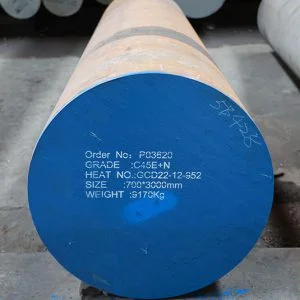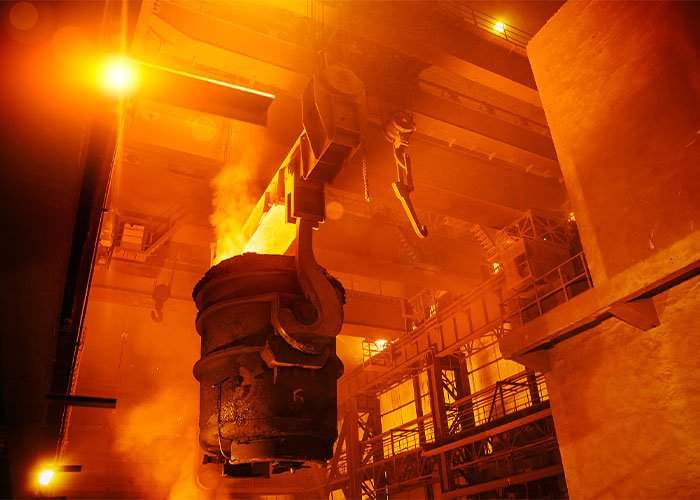Welcome to My Blog!
Before we dive into the content, I’d love for you to join me on my social media platforms where I share more insights, engage with the community, and post updates. Here’s how you can connect with me:
Facebook:https://www.facebook.com/profile.php?id=100085401406977
LinkedIn:https://www.linkedin.com/showcase/102680001/admin/dashboard/
Now, let’s get started on our journey together. I hope you find the content here insightful, engaging, and valuable.
Introduction
1045 steel is a popular medium-carbon steel known for its good strength, toughness, and wear resistance. It is widely used in various engineering applications, from machine parts and shafts to gears and bolts. One of the critical properties that engineers consider when selecting 1045 steel for a project is its tensile strength. Understanding 1045 tensile strength is essential for ensuring that the material will perform adequately under the required loads and stresses. This comprehensive guide will delve into what 1045 tensile strength means, how it is measured, the factors that influence it, and its applications in engineering.
Understanding 1045 Tensile Strength

Tensile strength is a fundamental mechanical property that describes the maximum stress a material can withstand while being stretched or pulled before it fails or breaks. For 1045 steel, tensile strength is a key indicator of its ability to perform under load in various applications. Tensile strength is typically measured in units of force per area, such as pounds per square inch (PSI) or megapascals (MPa).
1045 steel is often chosen for applications where a balance between strength and toughness is required. The tensile strength of 1045 steel falls within a specific range, depending on factors such as the heat treatment process, the section size of the material, and any additional alloying elements.
Factors Affecting 1045 Tensile Strength
Several factors can influence the tensile strength of 1045 steel. Understanding these factors helps engineers make informed decisions about material selection and processing techniques to achieve the desired mechanical properties.
Heat Treatment
Heat treatment plays a significant role in determining the tensile strength of 1045 steel. The steel can be subjected to various heat treatment processes, such as annealing, quenching, and tempering, each of which affects its microstructure and mechanical properties.
- Annealing: This process involves heating the steel to a specific temperature and then cooling it slowly to relieve internal stresses and improve ductility. Annealed 1045 steel typically has lower tensile strength but increased toughness.
- Quenching and Tempering: Quenching involves rapidly cooling the steel from a high temperature, followed by tempering at a lower temperature to reduce brittleness. This process increases the tensile strength of 1045 steel while maintaining a balance between strength and toughness.
Section Size
The size and shape of the 1045 steel section can also impact its tensile strength. Larger sections may cool more slowly during heat treatment, leading to variations in hardness and strength across the material. Engineers must consider the section size when specifying tensile strength requirements for a project.
Alloying Elements
Although 1045 steel is primarily composed of carbon and iron, trace amounts of other alloying elements, such as manganese and silicon, can influence its tensile strength. These elements can enhance the steel’s hardness and strength, making it more suitable for demanding applications.
Testing Methods
The tensile strength of 1045 steel is determined through standardized testing methods. The most common method is the tensile test, in which a sample of the steel is subjected to controlled tension until it fractures. The maximum stress recorded during the test is the tensile strength of the material.
Table: Typical Tensile Strength Values for 1045 Steel
| Heat Treatment Process | Tensile Strength (MPa) | Tensile Strength (PSI) |
|---|---|---|
| Annealed | 585 – 670 | 85,000 – 97,000 |
| Quenched and Tempered | 690 – 850 | 100,000 – 123,000 |
| Normalized | 620 – 755 | 90,000 – 110,000 |
| Cold Drawn | 760 – 1030 | 110,000 – 150,000 |
Applications of 1045 Steel Based on Tensile Strength
The tensile strength of 1045 steel makes it suitable for a wide range of engineering applications. Its strength and toughness allow it to perform well in conditions where other materials might fail. Here are some common applications of 1045 steel based on its tensile strength.
Shafts and Axles
1045 steel is commonly used in the manufacturing of shafts and axles due to its high tensile strength and good machinability. These components must withstand significant stress and torque, making tensile strength a critical property.
Gears and Pinions
Gears and pinions require materials with high tensile strength to handle the forces generated during operation. 1045 steel’s strength and wear resistance make it an ideal choice for these components, ensuring longevity and reliability.
Bolts and Fasteners
Bolts and fasteners made from 1045 steel are used in applications where high tensile strength is necessary to secure heavy loads. These components must resist shearing and stretching under stress, making 1045 steel an excellent material choice.
Machine Parts
General machine parts, such as connecting rods, couplings, and spindles, often require materials with good tensile strength and toughness. 1045 steel provides the necessary mechanical properties to ensure that these parts perform effectively under load.
Advantages of Using 1045 Steel for High-Tensile Applications

1045 steel offers several advantages for applications that require high tensile strength. Understanding these benefits can help engineers and designers choose the right material for their projects.
Balance of Strength and Toughness
One of the key advantages of 1045 steel is its balance between strength and toughness. This balance allows the material to withstand high stress without becoming too brittle, making it suitable for dynamic applications.
Cost-Effectiveness
Compared to higher-alloy steels, 1045 steel is relatively affordable while still offering excellent tensile strength. This cost-effectiveness makes it an attractive option for a wide range of engineering projects.
Machinability
1045 steel is known for its good machinability, allowing it to be easily shaped and processed into complex components. This property is particularly important in manufacturing industries where precision and efficiency are critical.
Versatility
The versatility of 1045 steel makes it suitable for various applications across different industries. Its tensile strength can be optimized through heat treatment, allowing it to meet specific requirements for different projects.
Conclusion
1045 tensile strength is a crucial property that engineers must consider when selecting materials for various applications. The ability of 1045 steel to provide a balance of strength, toughness, and cost-effectiveness makes it an ideal choice for many engineering projects. By understanding the factors that influence 1045 tensile strength and how it can be optimized through heat treatment and other processes, engineers can make informed decisions that lead to successful and reliable designs.
FAQ
What is the 1045 tensile strength in its annealed condition?
The 1045 tensile strength in its annealed condition typically ranges between 585 to 670 MPa (85,000 to 97,000 PSI).
How does heat treatment affect 1045 tensile strength?
Heat treatment processes, such as quenching and tempering, can increase the 1045 tensile strength significantly, often reaching up to 850 MPa (123,000 PSI) or more.
What factors influence the 1045 tensile strength?
Factors such as heat treatment, section size, alloying elements, and the specific testing methods used can all influence the 1045 tensile strength.
Why is 1045 tensile strength important in engineering applications?
1045 tensile strength is important because it determines the material’s ability to withstand stress and load without breaking, making it suitable for parts like shafts, gears, and bolts.
How does the section size of a component affect its 1045 tensile strength?
Larger sections may cool more slowly during heat treatment, potentially leading to variations in 1045 tensile strength across the material.
What is the typical range of 1045 tensile strength after quenching and tempering?
After quenching and tempering, the 1045 tensile strength typically ranges between 690 to 850 MPa (100,000 to 123,000 PSI).
Can 1045 steel be used for high-stress applications based on its tensile strength?
Yes, 1045 steel is suitable for high-stress applications, especially when properly heat-treated to optimize its tensile strength.
How does alloying affect 1045 tensile strength?
Alloying elements like manganese and silicon can enhance 1045 tensile strength by improving hardness and overall strength.
What is the difference in 1045 tensile strength between cold-drawn and hot-rolled steel?
Cold-drawn 1045 steel generally has a higher tensile strength, often reaching up to 1030 MPa (150,000 PSI), compared to hot-rolled steel.
How can engineers ensure the desired 1045 tensile strength in a project?
Engineers can ensure the desired 1045 tensile strength by carefully selecting the appropriate heat treatment process, considering section size, and verifying tensile strength through standardized testing.
